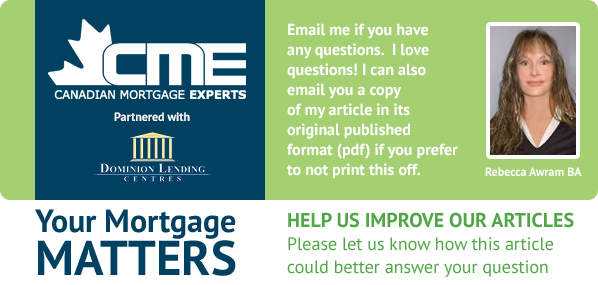
THE DOWNPAYMENT
Most renters feel they can afford the mortgage payment. The main reason they feel they can’t afford to purchase a home is because they don’t have a down payment. But there are many solutions available today that can help first-time buyers with their down payments.
Many lenders will allow for a gifted or borrowed down payment. And of those lenders that will not provide this alternative, many offer cash-back options that can be used as a down payment.
Gifted down payments are allowed by most lenders, as long as the gift giver is an immediate family member and is willing to sign a form stating that the monies are gift and not repayable.
A borrowed down payment will be allowed, as long as it is disclosed on the application as borrowed, and has been included as part of the debt ratio calculations.
For borrowers with very little debt and not enough saved for a down payment, an RRSP loan can be a useful option. The money is borrowed for an RRSP contribution, the payments are included in the borrowers’ debt profile, and then the funds are withdrawn under the provincial First Time Buyer program that allows them to withdraw RRSPs without penalty for use towards the purchase of their first home. In 2009, a $5,000 increase was made to the RRSP Home Buyers’ Plan, meaning first-time homebuyers can now withdraw up to $25,000 from their RRSPs for a down payment – tax- and interest-free. And if you’re part of a couple making a home purchase together, you can each withdraw up to $25,000 from your RRSPs.
If, for instance, a renter is currently paying $800 per month, with that same payment (including taxes) they could afford to buy a $120,000 home. And assuming real estate values increase 2% per year over the next five years, the new homeowner would have accumulated $27,000 in equity in their home. If they continue renting, however, this $27,000 has generated equity in someone else’s home.



